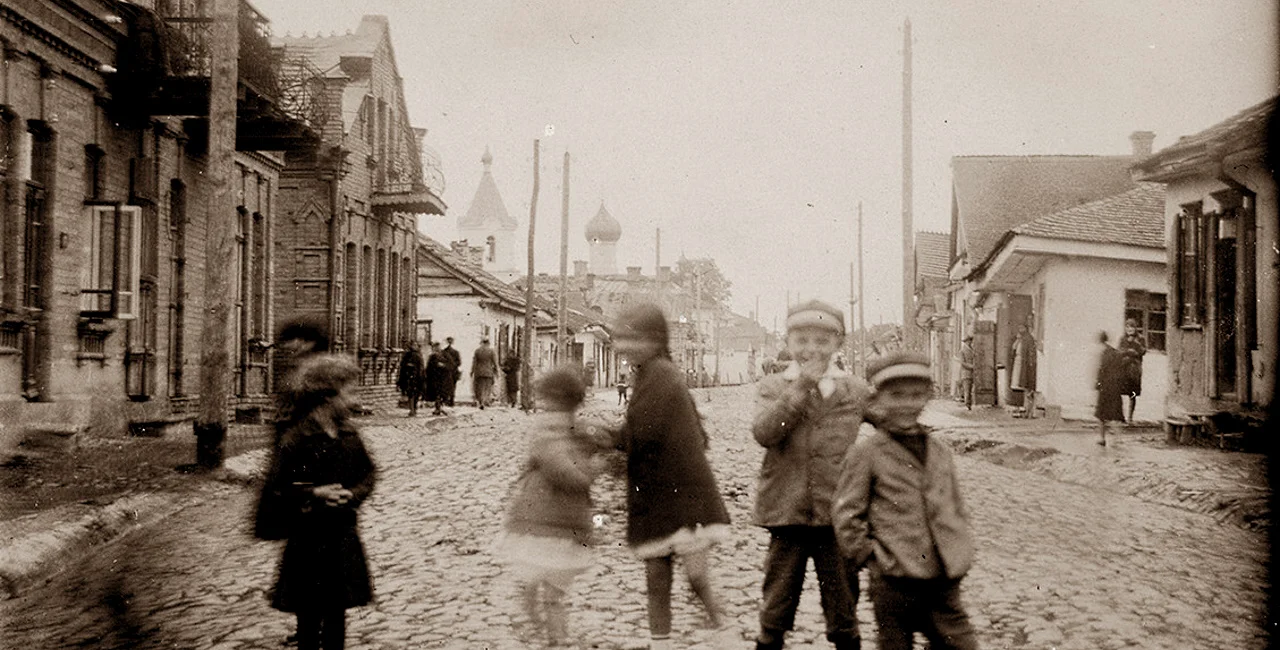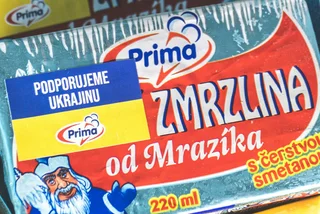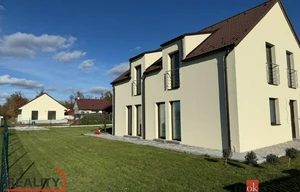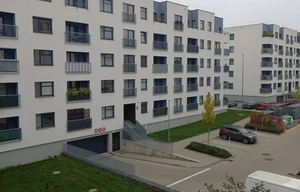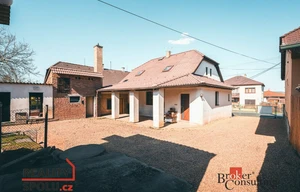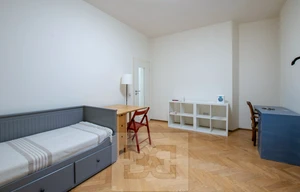Earlier this week, a group of people with historical ties to the Czech Republic were evacuated to Prague from Zhytomyr, Malinovka, and other towns in northwest Ukraine. They were descendants of Czechs who had settled in what is now Ukraine during the last half of the 19th century. Some 88 people, including 46 children, came to the Czech Republic in three buses.
Zhytomyr has now been heavily damaged by Russian bombs, with a school, a hospital, and residential homes being hit.
This evacuation of the Volhynian Czechs (Volyňští Češi) from the war zone is just the most recent chapter in their turbulent and often tragic history. The group is now small, but at its height in the early 20th century they numbered over 100,000 and they found themselves at the crossroads of most of the significant events of the 20th and now the 21st centuries.

Between 1868 and 1880, about 16,000 Czechs left Bohemia for the promise of a better life in the Russian Empire, then under the control of the Czech Alexander II. (The Soviet Union wasn’t formed until 1922.)
The migrants were promised land at low prices as well as the ability to establish businesses and factories. Other inducements included education, self-government, religious freedom, a 20-year tax break, and freedom from military duty.
The area they were offered for settlement was called the Volhynia region, which spreads across the modern-day Volyn and Rivne regions as well as parts of Zhytomyr, Ternopil, and Khmelnytskyi. It had been a part of Poland until the end of the 1700s. The land of the former gentry there was either taxed heavily or confiscated. Many Poles left due to Russia’s harsh treatment, and much of the land was empty as a result.

The Czechs built their own communities there with names like Český Malín and Český Boratín. These towns now just go by the names Malyn and Boratyn.
By World War I, the number of Czechs and Slovaks in Russian-controlled lands was well over 100,000. Most were in the Volhynia region. In the war, the Volhynian Czechs fought on the side of Russia, which along with other allies opposed Germany and the Austro-Hungarian Empire.
The ethnic Czech soldiers were part of the famed Czechoslovak Legion in a unit called Česká družina. Other Czechs and Slovaks, including prisoners of war who wanted to fight against the Austro-Hungarian Empire, also joined the Legions. Those who returned to the newly formed Czechoslovakia after 1918 were welcomed as heroes. The Legion Bridge (Most Legií) in Prague is named for then.
Events took a turn for the worse after the establishment of the Soviet Union. In 1921, the Volhynia region was divided between Poland and what would soon become the Soviet Union. The farmlands were collectivized and freedom of religion ended. The Volhynian Czechs were persecuted along with other minorities. Teaching the Czech language was forbidden after 1938. Conditions were initially better for the Czechs on the Polish side but also deteriorated in the 1930s.
World War II saw more fighting, with the Volhynian Czechs fighting against the Nazis, who occupied Poland and made incursions into the Soviet Union. Several villages including Český Malín were burned to the ground and the inhabitants were massacred.

A wave of immigration back to Czechoslovakia started in 1947. Many of those who returned settled into the Sudetenland, which was mostly empty due to the forced expulsions of ethnic Germans from Czechoslovakia after the war. An estimated 40,000 ethnic Czechs returned. At the same time, Russians, Belarusians, and Ukrainians were allowed to move from Czechoslovakia back to the Soviet Union.
The ethnic Czechs were affected by the Chernobyl disaster in 1986. Soviet authorities planned to relocate Czechs in and around the village of Zubovshchina due to concerns over radiation. But the families were to be moved individually, and not as a group.

In 1990, when new Czechoslovak President Václav Havel visited the Soviet Union, one of the ethnic Czechs slipped him a note asking for help. Havel was able to arrange for about 2,000 of the Volhynian Czechs to return to Czechoslovakia. They were able to move into houses formerly used by the occupying Soviet military at four different locations, and two families moved to Zlín.
Since the 1990s, more ethnic Czechs have also returned to the Czech Republic but no exact figures are available.

Part of First Republic Czechoslovakia is now in Ukraine
Czechoslovakia has another tie to an ethnic group Ukraine. When the First Republic was established in 1918, it was larger than it would be after World War II. When the maps of Europe were redrawn after the war, the easternmost part of Slovakia was attached to Ukraine, then part of the Soviet Union.
This split the ethnic group known as the Ruthenians, sometimes called Subcarpathian Rusyns, into two pieces, with the largest part in Ukraine.
As had happened to the Volhynian Czechs, the group was persecuted as a minority. Ruthenians were stripped of any sense of ethnic identity and referred to simply as Ukrainians, even though their culture and language were quite different.
After the Velvet Revolution, some Ruthenians began to emigrate from Ukraine to places in both the Czech Republic and Slovakia.
The group is legally recognized as a minority in the Czech Republic. They are dispersed, though. There is no Ruthenian neighborhood in Prague, for example.
In 1990, a Society of Friends of Subcarpathian Rus (Společnost přátel Podkarpatské Rusi) was established in Prague as a way for Czechs and Ruthenians to create stronger ties. When Czechoslovakia still existed, the group was urging that the Ruthenian area be reintegrated, but with the breakup of Czechoslovakia in 1993, that became an impossible goal for a group based in Prague. The group is still active in promoting cultural events in Prague that feature artists with Ruthenian roots.
While many people have heard world-famous artist Andy Warhol described as having Slovak roots, his parents were actually Ruthenians from Miková, a Slovak town near the Ukraine border.












 Reading time: 4 minutes
Reading time: 4 minutes 